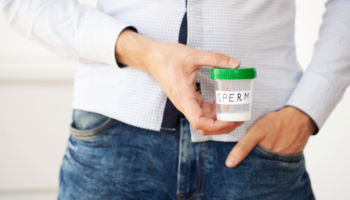Sexual discomfort is a general term for any pain stemming from sexual activity. The clinical term for sexual discomfort is dyspareunia.
Sexual discomfort may be caused by a number of factors which can be psychological or physical in nature. It often diminishes sexual desire and pleasure, strains intimate relationships, and impacts quality of life.
More About Sexual Discomfort
Women experience sexual discomfort significantly more often than men. Many report the discomfort feels like burning, stabbing, ripping, or aching sensations, often at the vaginal opening or deep in the pelvis. It may occur before, during, or after penetration, with a penis, a sex toy, finger, or even a tampon, or only with deep thrusting.
A number of factors can trigger sexual discomfort. Often sexual discomfort goes hand-in-hand with vaginismus, a condition which causes the vaginal muscles to contract with penetration. Sexual discomfort may also occur when people are forced into sex, when they are not adequately aroused, or when lubrication is inadequate. It also often occurs following the hormonal changes of menopause and breast-feeding. The painful vaginal adhesions people get with endometriosis can also cause discomfort during sex. For men, sexual discomfort may stem from allergic rashes, infections of the prostate gland or testes, and physical penile abnormalities. For both genders, concerns and misinformation about sex and the body can also cause sexual discomfort.
Most women experience sexual discomfort at some point in their lives. If it happens only occasionally, there is little cause for concern. But if sexual discomfort is a persistent problem, there are a number of treatment options, depending on the cause.
Counseling can benefit people whose sexual discomfort stems from psychological problems. Changing positions, increasing foreplay, and using commercial lubricants can also assist couples. Estrogen therapy, desensitizing therapy, and pain medications can help people whose sexual discomfort stems from a medical condition. Pelvic floor physical therapy is a new treatment method getting excellent results.



